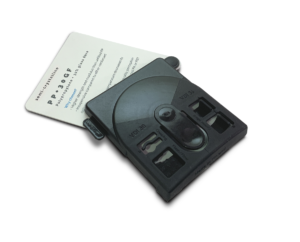
The strength and modulus of polypropylene are often increased by mixing glass into it. The objective is improvement of mechanical performance at an affordable price.
Why choose it?
- Inexpensive compared to other options.
- Strength and stiffness requirements are modest.
Why not choose it?
- High service temperature (over or close to 100°C) significantly decreases its modulus of elasticity.
- The surface of the product is easily a little greasy.
- Due to the high shrinkage of PP, the products tend to warp
Typical applications:
- Handles of lower-priced hand tools
- Water pipe connectors
By examining the Plasticprop sample made of PP + 30 GF, you can draw for example the following conclusions:
- The sample is clearly stiffer than non-reinforced PP, but far from the stiffness of PA and PBT samples filled with the same amount of glass. The base material has a substantial influence on the stiffness.
- The difference in stiffness between the materials can be demonstrated by dropping the samples to the ground. PP will absorb some of the energy, thereby suppressing the bouncing. The difference in stiffness can also be heard in the pitch of the dropping sound.
- The glass stands out on the product surface, especially in the polished area. This is difficult to avoid.
- The corner effect is extensive and the sample’s lower edge is wavy. The entire sample is slightly arched. The glass-reinforced material shrinks differently parallel to flow and perpendicular to flow. This is enhanced by the extensive shrinkage of the base material.
- The hinge has filled up but soon breaks off if bent. Interestingly the hinge still works for some time, even in the glass-reinforced version.
- Spark-eroded draft surfaces have scratched the surface on the rougher side, but even there the damage is relatively limited.
- A sample heated in an oven will lose a considerable amount of its stiffness at approximately 100°C.
